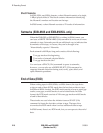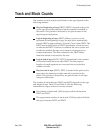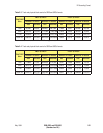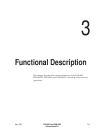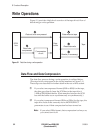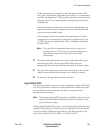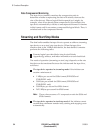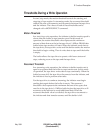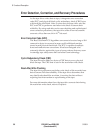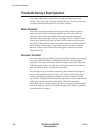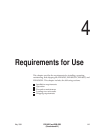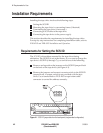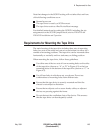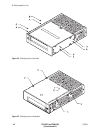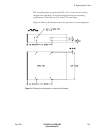
Error Detection, Correction, and Recovery Procedures
As the tape drive writes data to tape, it integrates error correction
code (ECC) and physical-block cyclic redundancy check (CRC) bytes
with each physical block. After it writes data, the tape drive uses the
ECC and CRC to perform a read-after-write check to ensure data
reliability. By using read-after-write error checking and sophisticated
error correction procedures, the tape drive offers a non-recoverable
error rate of less than one bit in 10
17
bits read.
Error Correction Code (ECC)
The Reed/Solomon ECC algorithms can correct a burst as long as 264
consecutive bytes in error and as many as 80 additional random
errors in each physical data block. The ECC is capable of multiple
burst and random error corrections. It has been designed to be
extremely effective against the types of error patterns that may occur
in cartridge tape subsystems that use helical-scan technology.
Cyclic Redundancy Check (CRC)
The tape drive also adds two bytes of CRC data to every physical
block on tape. The CRC data is used in the read-after-write check.
Read-After-Write Checking
The tape drive performs a read-after-write check of the recorded user
data to ensure full data reliability. If the tape drive determines that
any data blocks should be rewritten, it rewrites the data without
requiring host intervention or repositioning of the tape.
For more information about how the tape drive corrects data during
the read-after-write check, refer to Chapter 6.
3-6 EXB-8205 and EXB-8505 510504
(Standard and XL)
3 Functional Description



